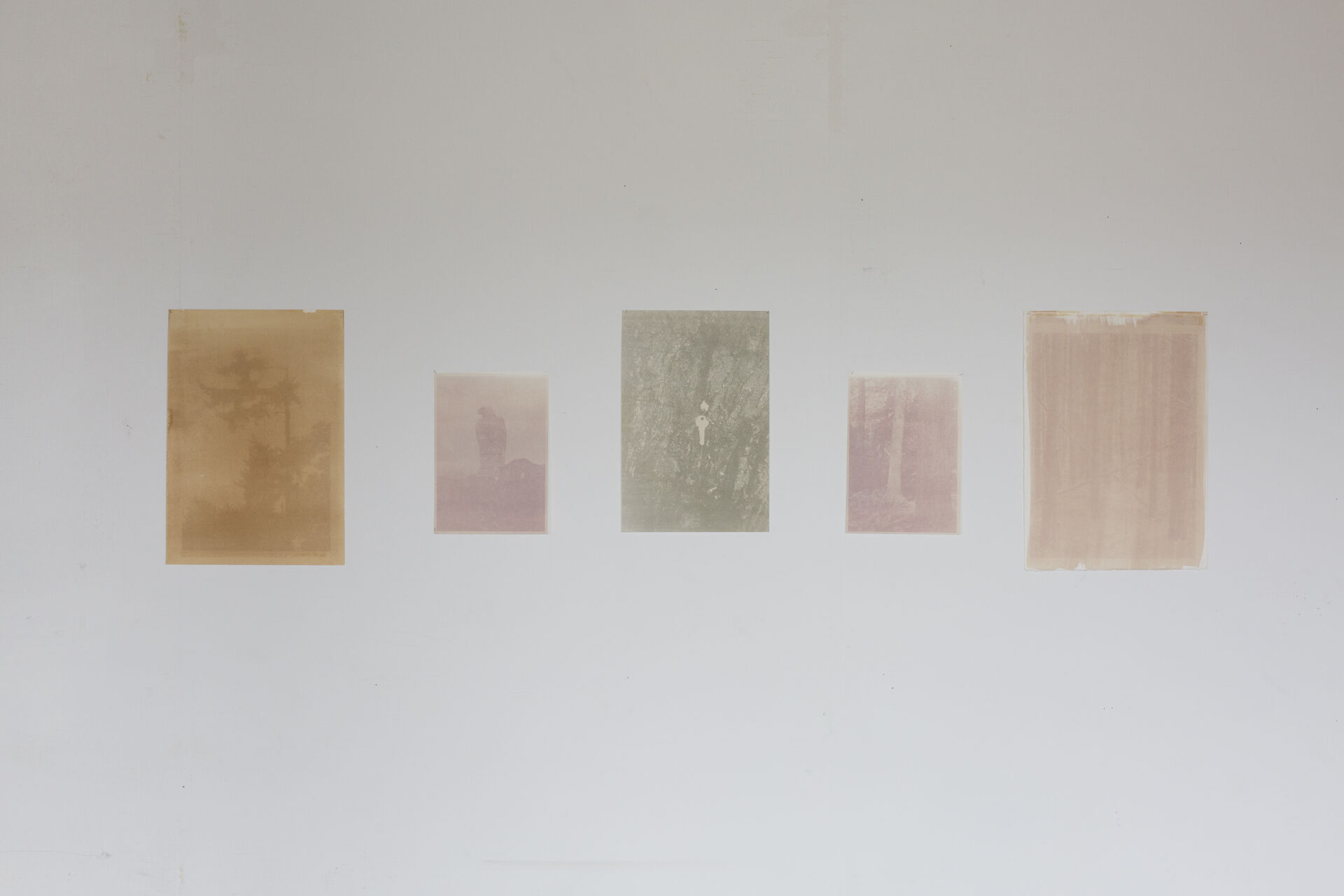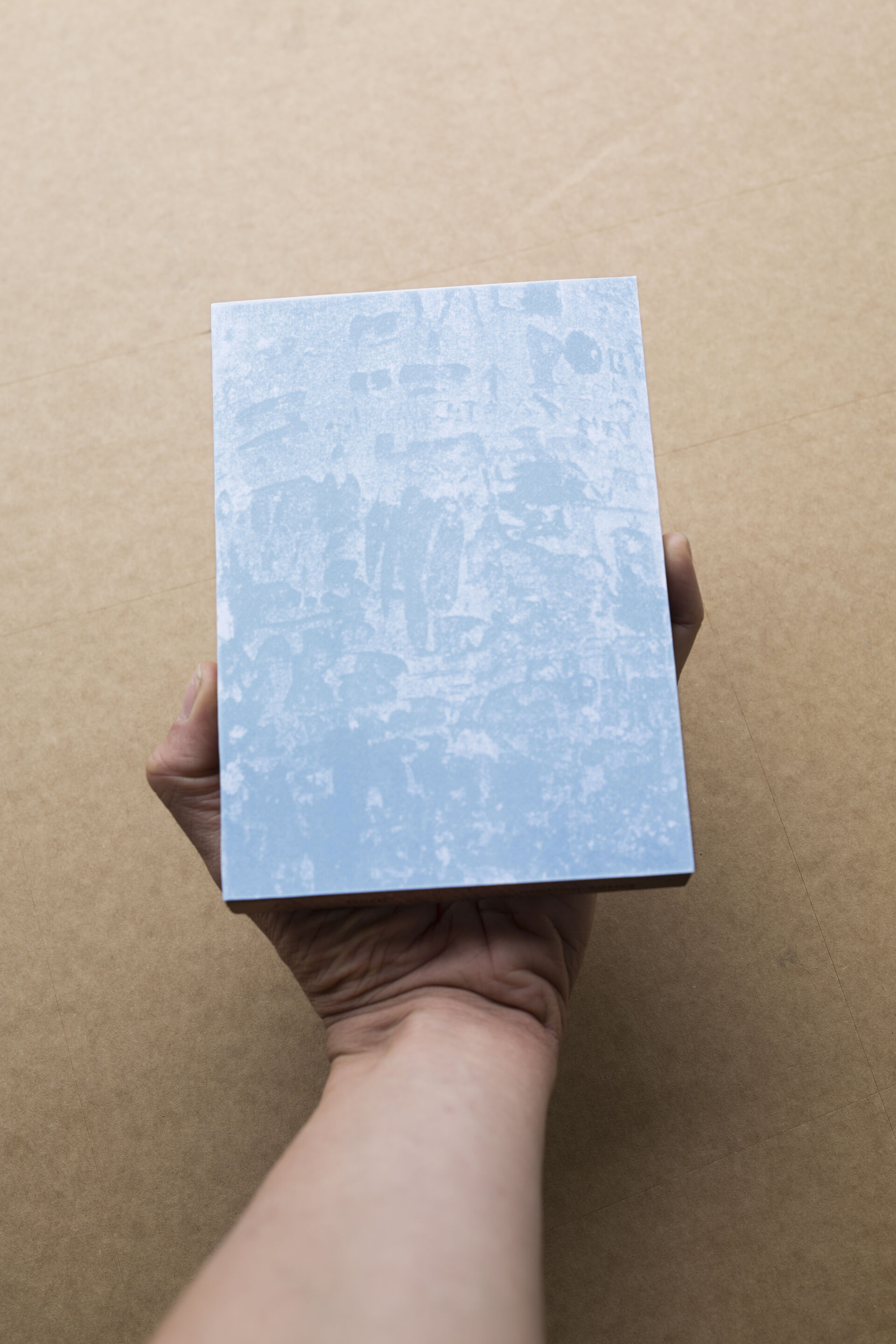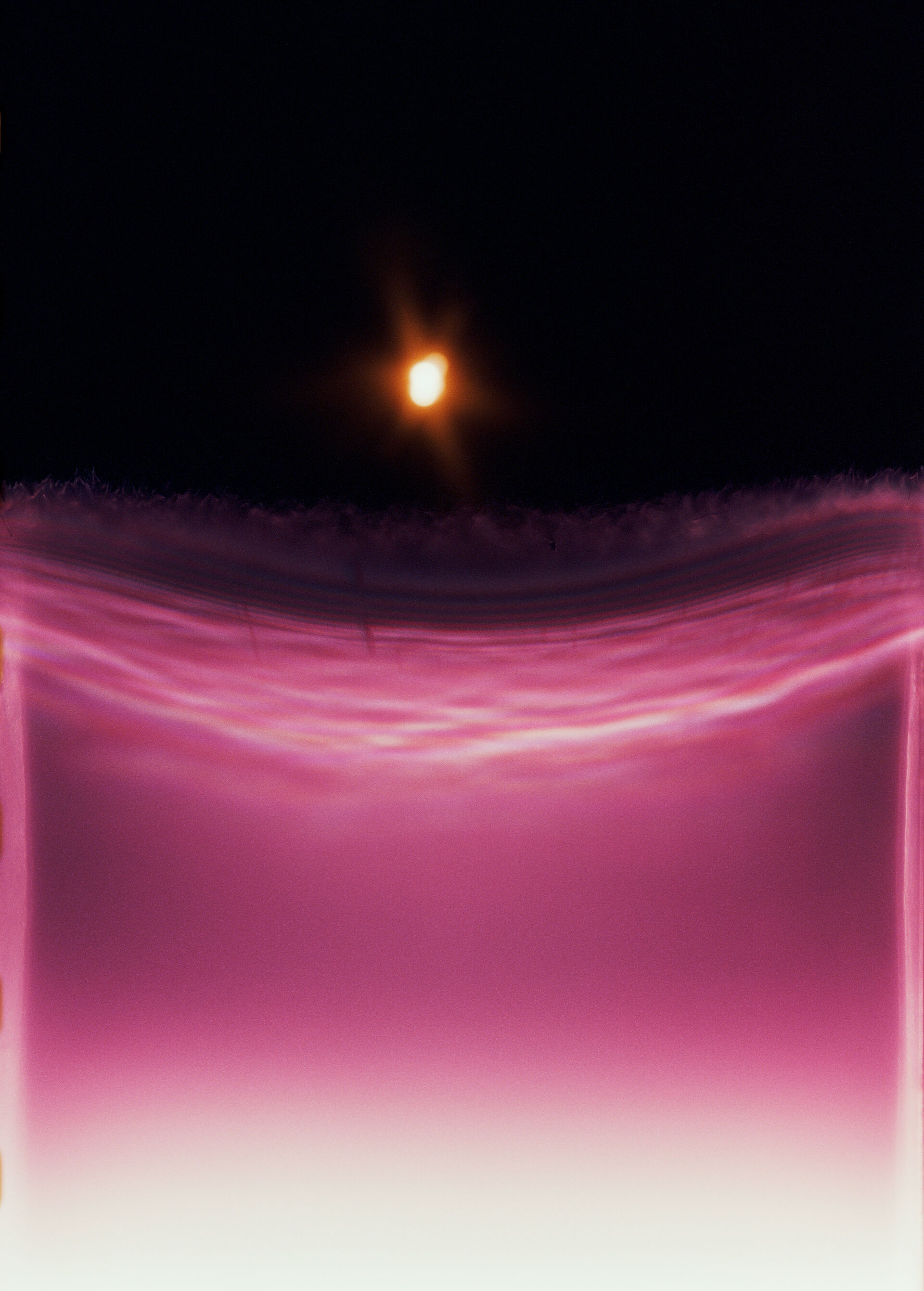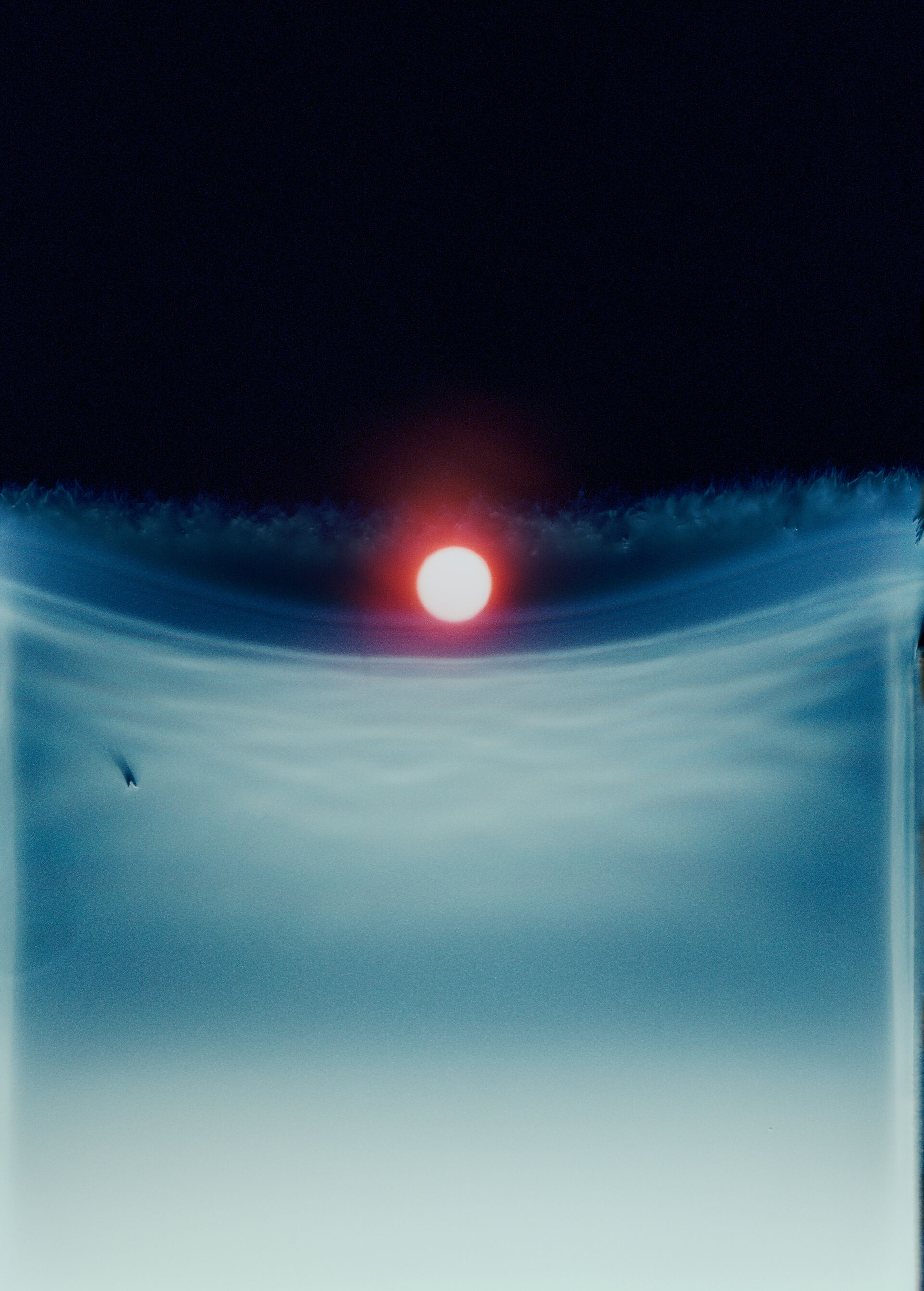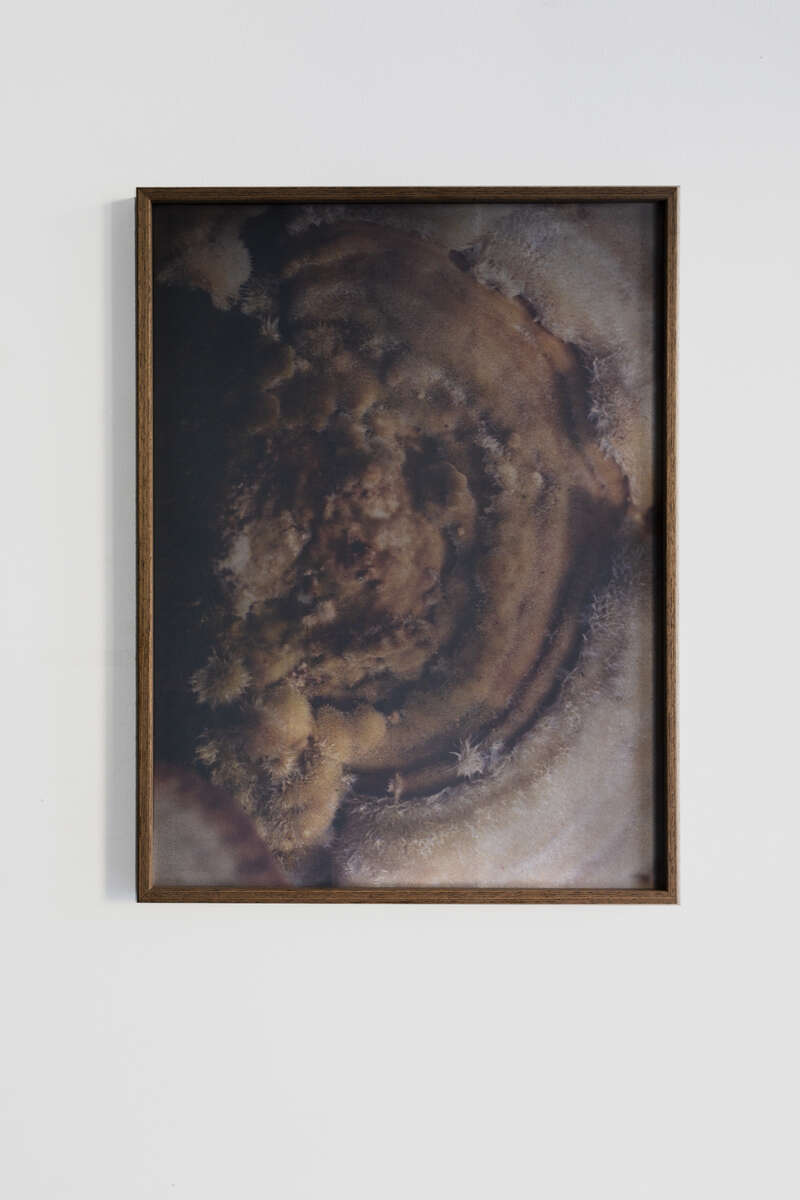
FUNGI C001, 2019, 30x40cm, Black thermochromic on archival inkjetprint, frame in wooden metal frame, mdf, unique, collection of the Flemish Community / Fotomuseum FOMU Antwerp.
Salutary Alienation: On the Photography of Dries Segers and the Art of Noticing Things
It’s one of the remarkable effects of global capitalism: the more intimately intertwined all the layers of the world become, the more this interconnectedness seems to disappear from our immediate environment. While photography has had its own part to play within this logic of alienation, artists like Dries Segers (1990) direct our attention to a world beyond its alienating appearance.
Translated from Dutch by Ezra Babski
This contribution is co-published by rekto:verso
All images © Dries Segers
Bas Blaasse
08 dec. 2022 • 19 min
‘Without meaning to, most of us learn to ignore the multispecies worlds around us. Projects for rebuilding curiosity... are essential work for living with others.’Anna Lowenhaupt Tsing, The Mushroom at the End of the World: On the Possibility of Life in Capitalist Ruins (Princeton: Princeton University Press, 2015), 281–282. - Anna Lowenhaupt Tsing, The Mushroom at the End of the World
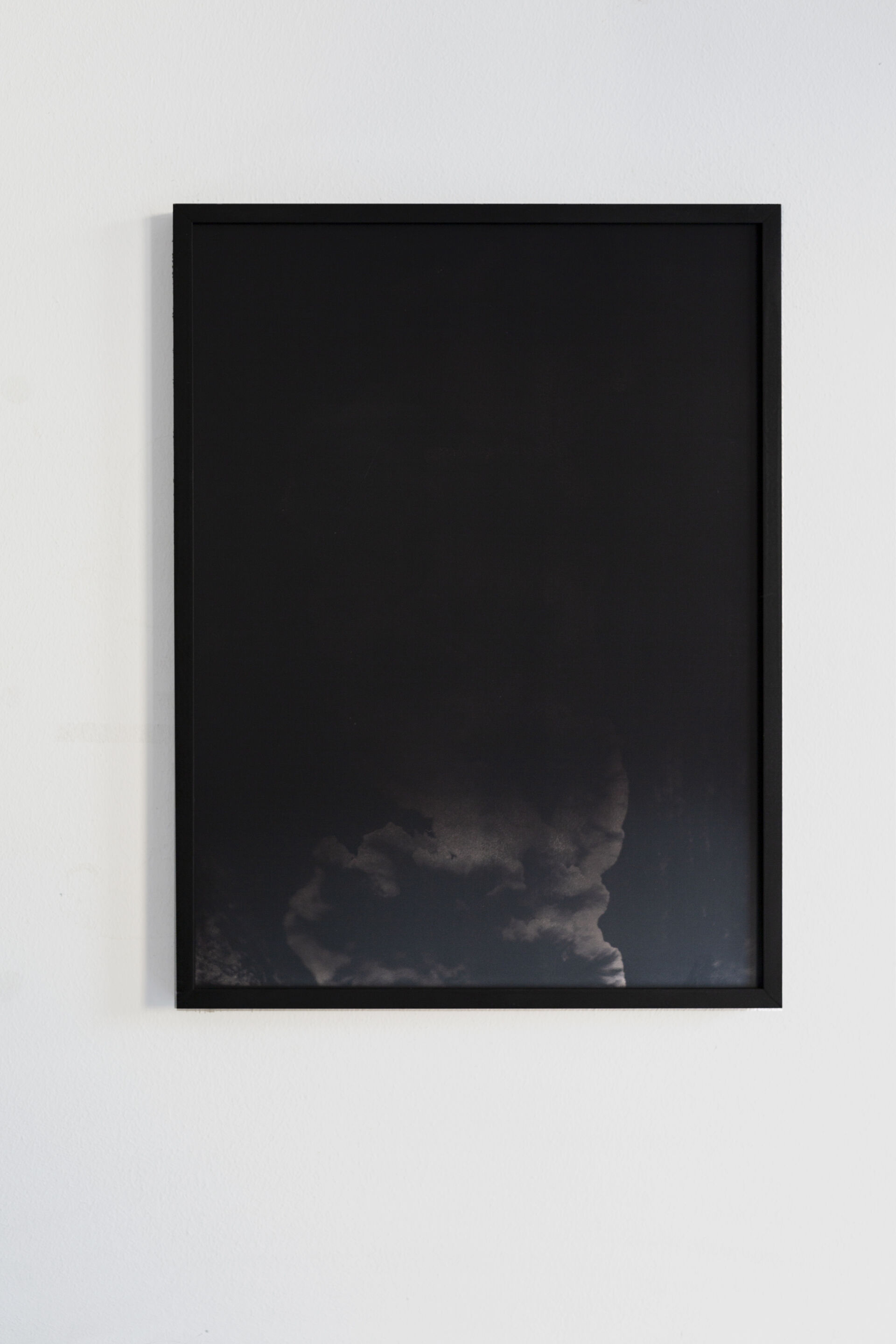
FUNGI B001, 2019, 30x40cm, black thermochromic on archival inkjetprint, metal frame, mdf, unique, collection of the Flemish Community / Fotomuseum FOMU Antwerp.
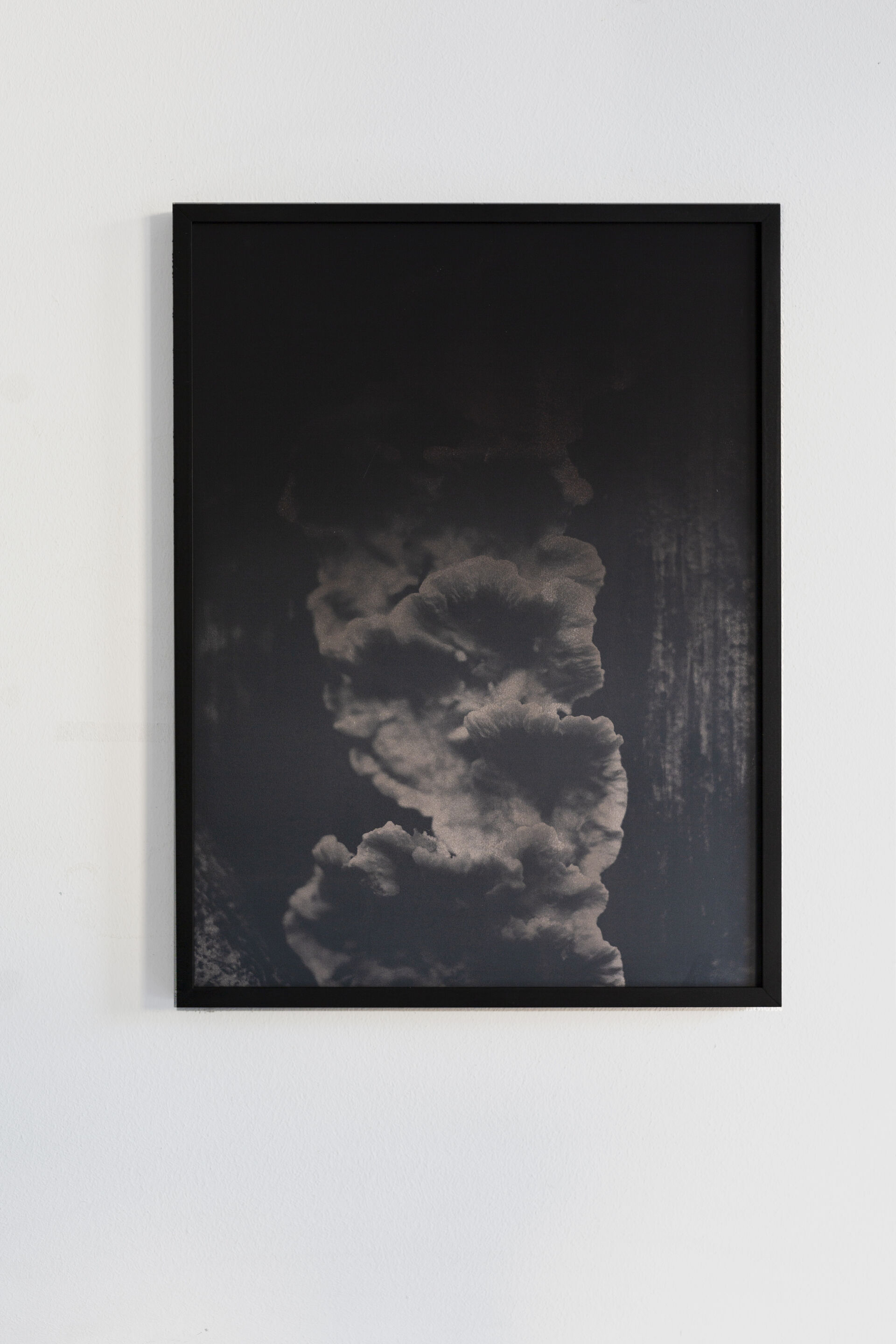
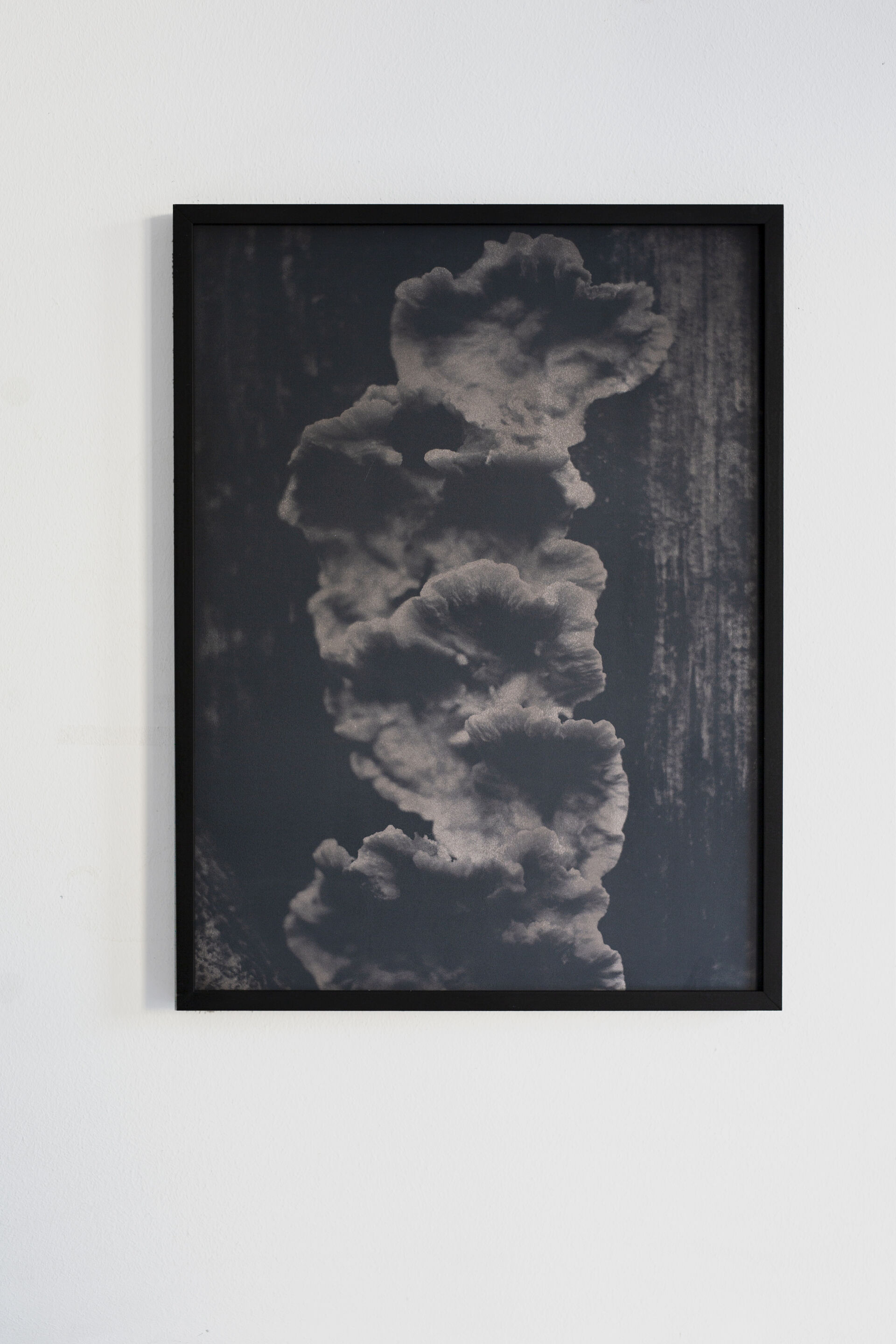
A double orientation
Fungi are the oldest and among the largest living organisms on the planet. Mycelium networks are found everywhere; every autumn, they make their existence known by shooting up mushrooms. For the vast majority of the time, however, they remain virtually invisible to us. Many fungi develop a relationship of ‘mutualistic symbiosis’ with plants or trees, in a formation known as a ‘mycorrhiza’ (from the Latin myco, meaning ‘of fungi’, and the Greek rhiza, meaning ‘root’). The two (or more) organisms are connected to each other via underground root networks, making them dependent on one another. Fungi extract minerals from the soil that plants and trees can absorb through their roots; in return, the latter provide the fungi with carbohydrates. It’s the most common form of collaboration between plants and fungi – which, however, is not always harmonious. A fungus can also begin parasitising the root of a plant, for example. A perpetually unstable alliance, nonetheless of great significance for the creation and preservation of biodiversity, as it enables plants to survive in more challenging circumstances.
In the autumn of 2018, Segers headed into Duden Park in Brussels to photograph fungi and mushrooms. I picture him wriggling through wet bushes, looking around, stooping to avoid low-hanging branches, before finally kneeling down in the soggy, multi-coloured litter of dead leaves, moss, and acorns, camera poised, because his eye has been drawn to an unusual fungus or mould formation at the root of a nearby tree. It’s a stereotypical image of the solitary photographer, traversing the world with patient observation and extracting visual ‘quotes’ from his surroundings, to borrow a phrase from John Berger.John Berger, ‘Appearances’, in Another Way of Telling, eds. John Berger and Jean Mohr (New York: Pantheon, 1982), 100. Yet in many ways, Segers’ practice represents the exact opposite of this classical approach to photography.
Segers’ work has a strong material orientation and is characterised by an interplay of at least two movements or motifs. The gaze is directed both inward and outward. Even when no camera is involved, his work often focuses on the technical potential of uncontrollable biological worlds that lie beyond the veil of our everyday perception. By experimenting with natural fixation and exposure techniques, self-developed camera systems, and vegetable inks, Segers’ projects bear the literal traces of the more-than-human world they both interact with and depend on. The result is an elementary and experimental photographic self-examination, which at the same time evokes the presence of an environment we scarcely notice otherwise, leading to the realization that the technological and the biological form no contradiction, but rather a continuum.
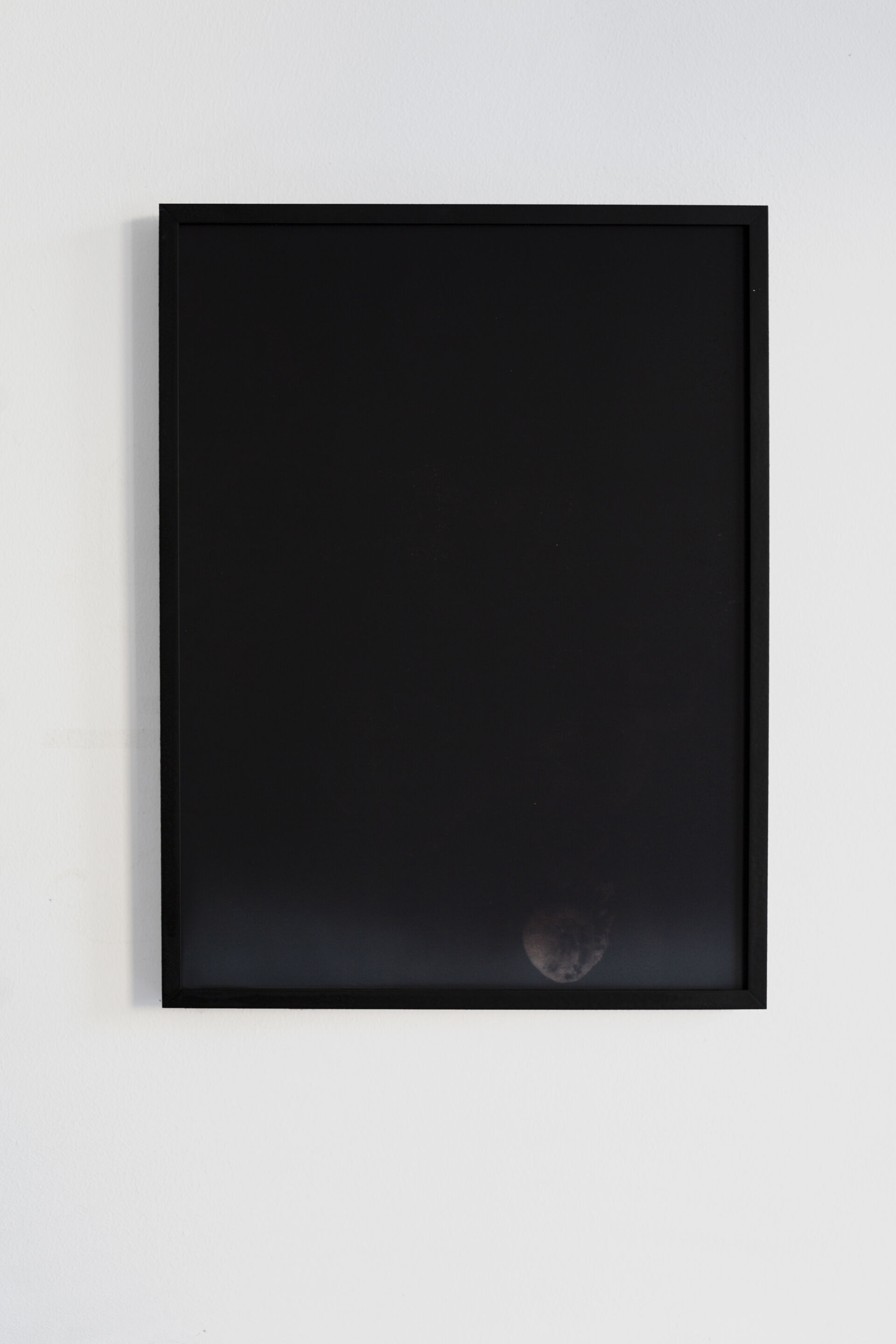
FUNGI B004, 2019, 30x40cm, black thermochromic on archival inkjetprint, metal frame, mdf, unique, collection of the Flemish Community / Fotomuseum FOMU Antwerp.
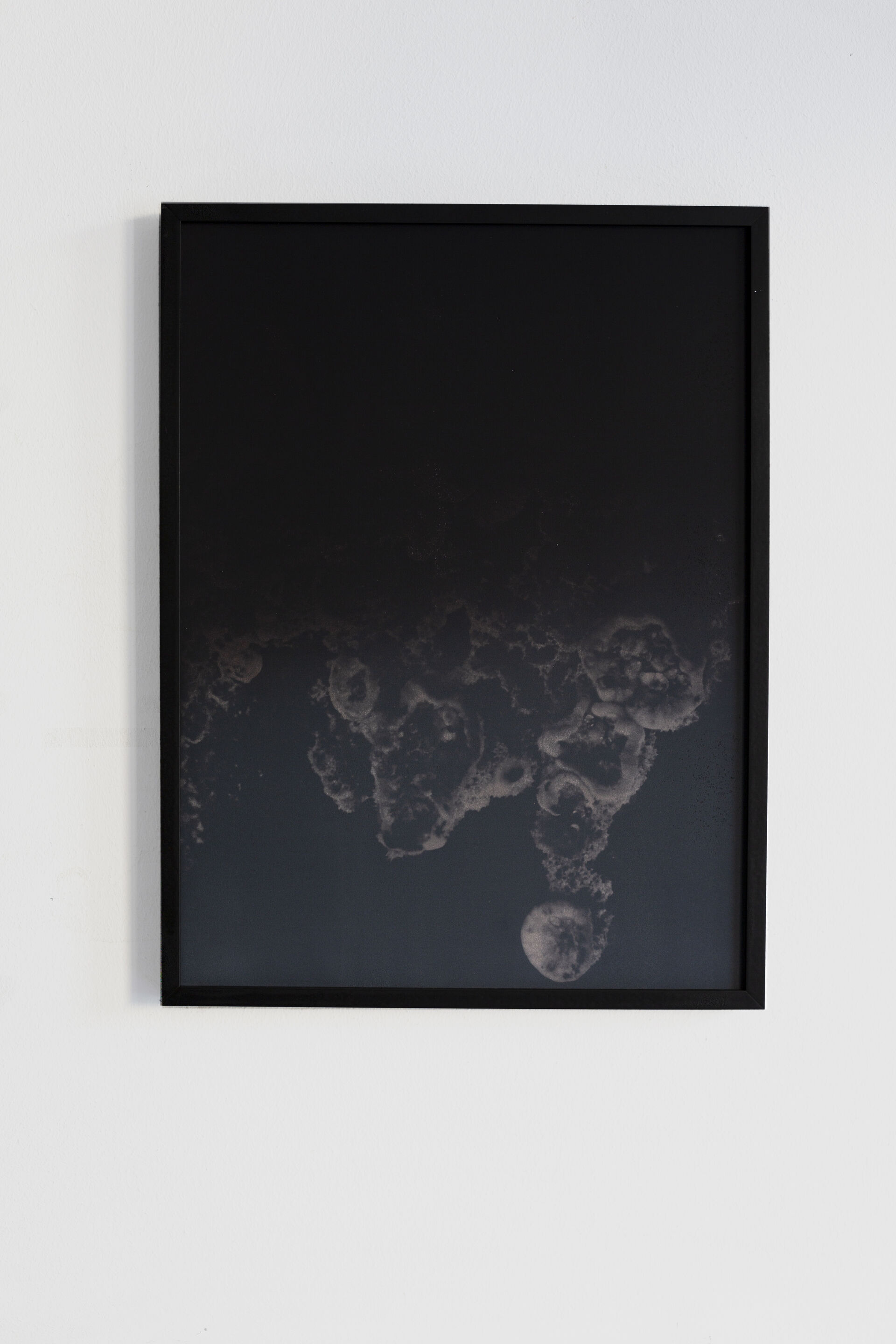
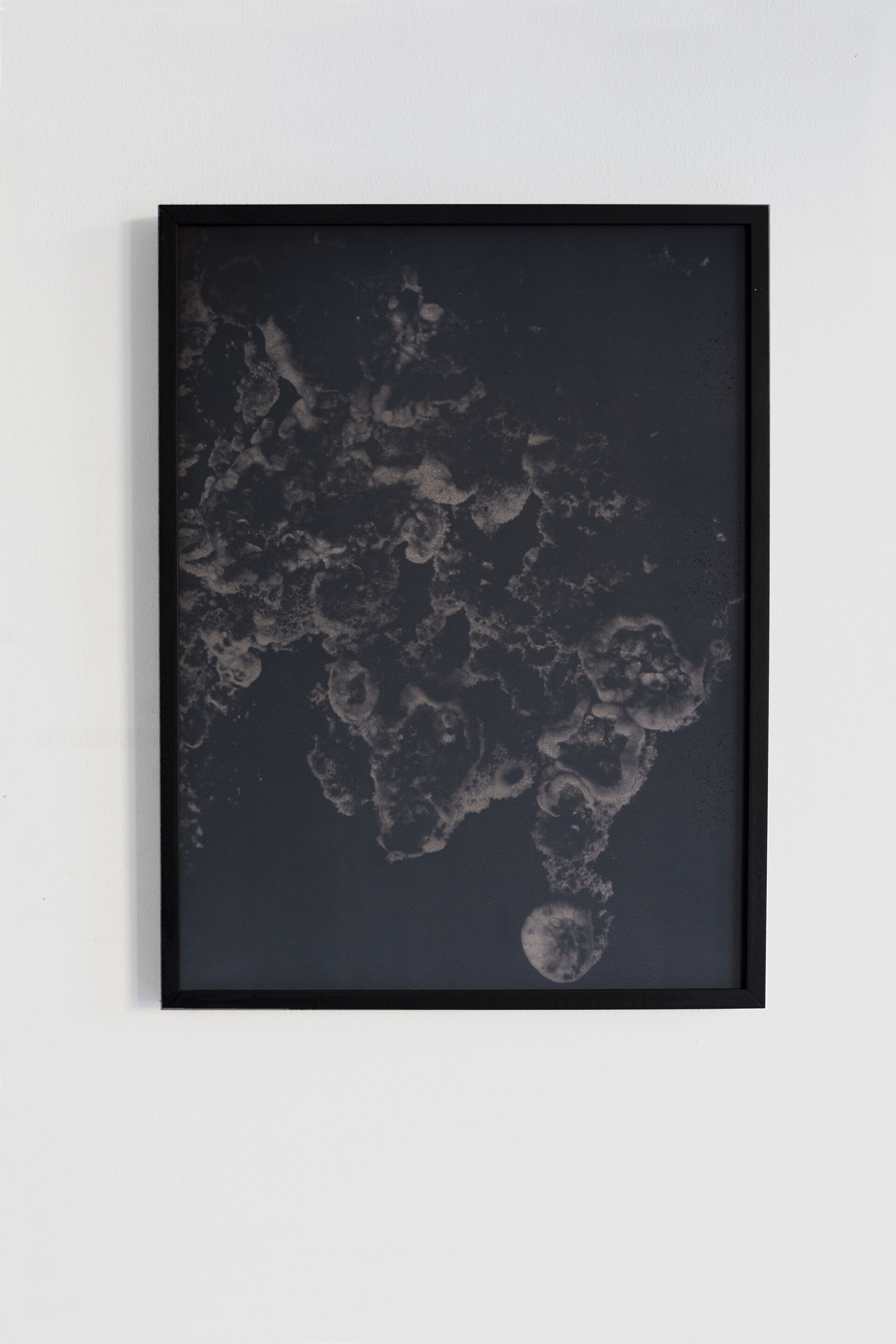

FUNGI B005, 2019, 30x40cm, black thermochromic on archival inkjetprint, metal frame, mdf, unique, collection of the Flemish Community / Fotomuseum FOMU Antwerp.
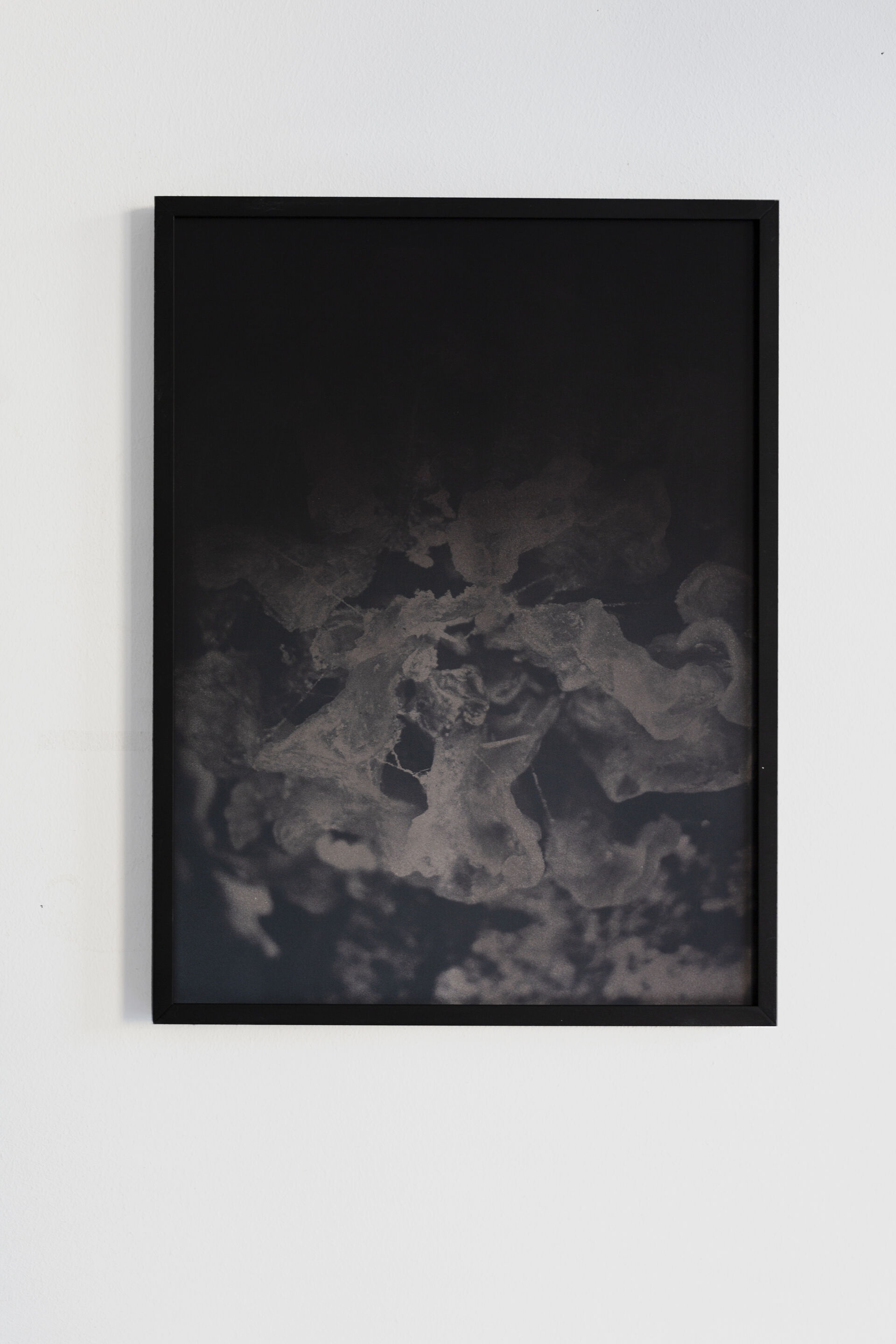
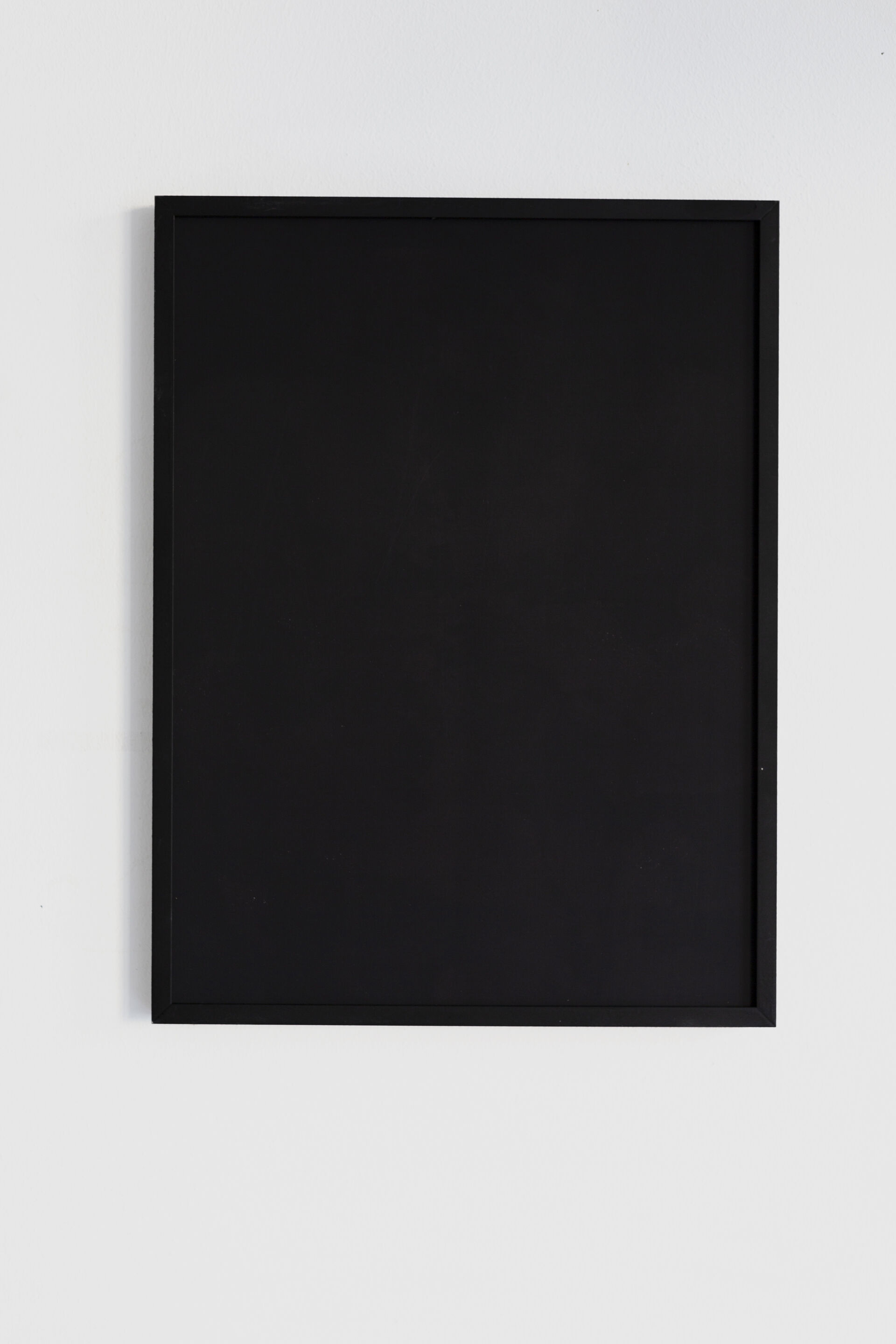
FUNGI (2019) is the result of Segers’ investigations in Duden Park and consists of several prints installed above a pair of heating devices. A timing system controls the heaters, which turn on and off at regulated intervals. The images – enlarged macro shots of all kinds of fungi – react to the climate of the room, only becoming visible at certain temperatures. If the room is too cold, their surface will remain matte black. This effect is achieved by overlaying the inkjet prints with thermochromic ink, which becomes transparent when exposed to heat. Since the chemical composition of the prints ‘reacts’ to the surrounding environment, one could say they come to life, attaining a status that exceeds mere indexicality. One finds oneself at the mercy of the tantalizingly inscrutable, ‘sentient’ oscillations of the installation as a whole, a situation that allows the viewing conditions to suddenly emerge and claim existence.
The photos in FUNGI are more straightforward and conventional than much of Segers’ earlier work, which often revolves around abstracted imagery meant to challenge the viewer’s visual literacy. In works such as a circle, a line, a cross (2019), Black Body (2018), or Hits of Sunshine (2017), the artist explored generative processes of photographic image production by means of relinquishing control. By tampering with film rolls or camera mechanisms, for example, he developed exposure techniques in which the photographer retains only partial authorship, guiding the process while remaining blind to the result. The three non-figurative works mentioned above – whose conditions of creation are deliberately nonreproducible – are essentially a record of basic photochemical reactions involving emulsion and light; yet they bear the mark of the specific parameters devised for them. They testify to the presence of both light and manipulation.
Segers ‘wants to challenge the medium of photography’.Dries Segers in conversation with Els Roelandt, HART Magazine 217, October 2021. He focuses on certain aspects of the medium that often go unquestioned, such as control, transparency, and the automatic operation of taking a picture, while deliberately circumventing what is perhaps photography’s most salient feature – its reproducibility. In works such as Blue Waters (2018–2019) or To Take Leave (2020), he brings his interest in the material basis of photography further toward natural properties and processes that resemble the essential characteristics of the photographic process.
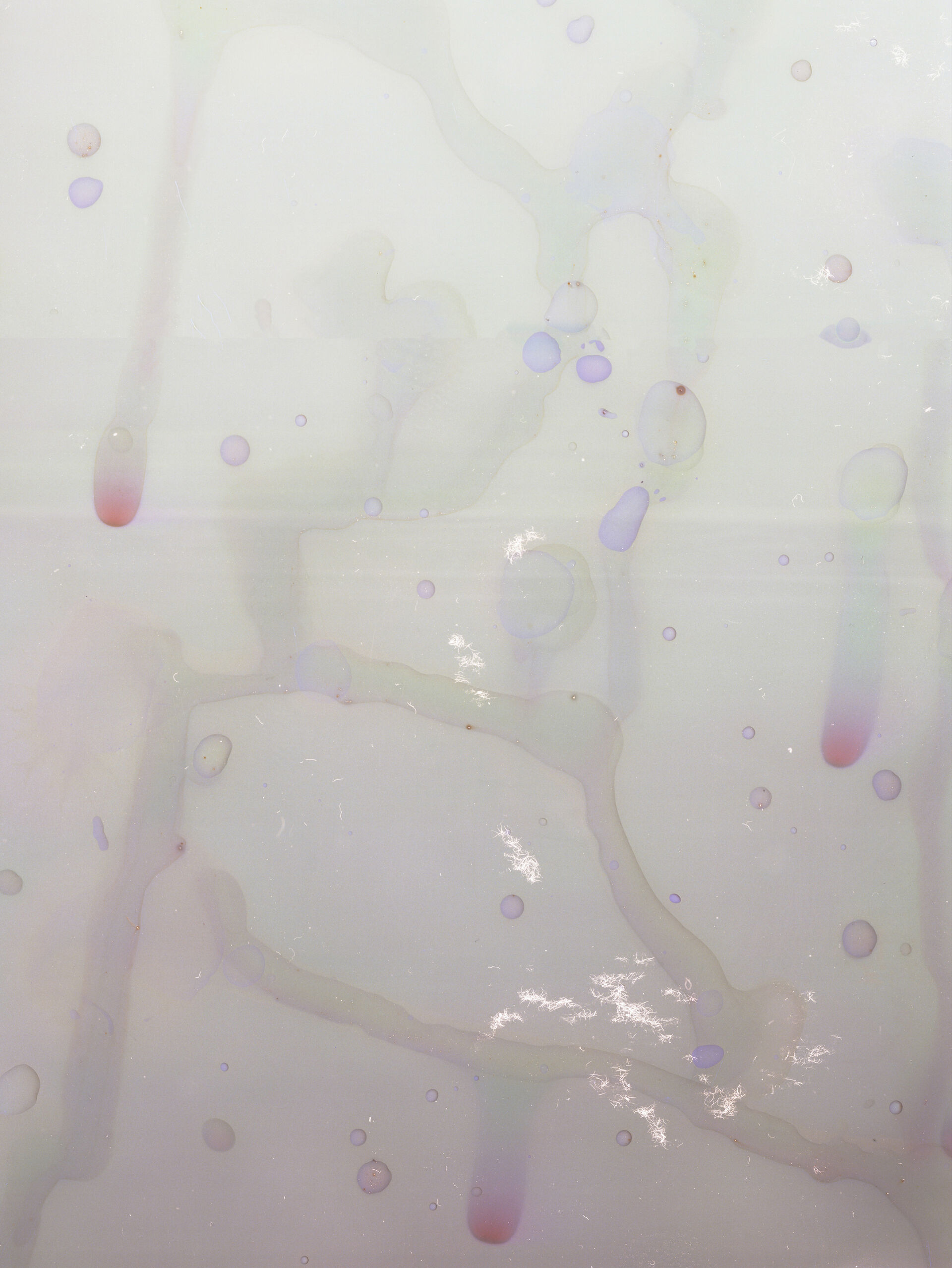
Responding rain (white), lambda color C-print
Blue Waters, consisting of cyanotypes on unbleached cotton, uses sunlight as a means of exposure. During the period of exposure, the light-sensitised canvases are continuously refolded, always according to a different pattern. With each new fold, new elements of the work are exposed, while others become hidden. The end result, as in other works, can never be entirely predicted or controlled by its author. To fix and wash the canvases, Segers used water; to dry them, wind. It’s a simple demonstration of the photographic potential of the elements, just as we’ve known about the light-sensitive properties of plants for centuries (think photosynthesis). Around the same time that photography as we know it was ‘invented’, a process was also developed to produce images with plant material. Segers harnesses this technique in To Take Leave, a series of ‘anthotypes’ made using light-sensitive ink distilled from plants, weeds, and flowers. Since no fixer is applied, the same natural light that rendered the images visible will destroy them if they are exhibited for too long, giving rise to a fundamental instability that challenges their existence as works of art.
These natural components, such as the air we breathe and which we need to survive, also provide an opportunity to reflect our own atmospheric presence. Responding Rain (2019) offers a photographic visualisation of the invisible fluctuations in the chemical composition of our surroundings, such as occur in light and air pollution. On rainy nights, Segers left light-sensitive material outside that reacted to the toxins and other chemicals in raindrops. These chemicals left behind direct imprints, while the light pollution in the air was partly responsible for the background colour of the (once again) abstract images.
While FUNGI’s primarily pictorial imagery differs somewhat from Segers’ more abstract material photography, the installation acts as a reminder to the viewer to remain attentive, whereas the ‘modesty’ of the photographic gaze in FUNGI lies precisely in Segers’ ability to visually capture ecosystems without impinging on them, let alone disrupting them. Indeed, the fungi remain undisturbed in their function of linking all kinds of trees and plants in a park where hundreds of people walk or run every day. Moreover, by disrupting the climatic stability of the room via its programmed heating elements, the installation exerts an active influence on the ecosystem of the space in which it is exhibited, affecting both the display conditions of the installation itself as well as those of the other artworks.FUNGI was acquired by the Flemish Community, among others, and is part of the collection of the FOMU in Antwerp.
Invisible networks
Given the crucial role they play in all kinds of ecosystems, it’s not surprising that fungi have attracted so much attention of late in academic and artistic circles. (Segers is far from the only artist to thematise them in his work.) According to Bruno Latour, the current preoccupation with fungi, moulds, and mushrooms probably has to do with a growing realisation that the world we live in can no longer be explained by traditional metaphysical schemes that regard humans and the rest of the world as two separate phenomena. In the autumn of 2021, Bruno Latour spoke with journalist Nicolas Truong about the key components of his thinking in an eleven-part series for ARTE. In books like Face à Gaïa (2015) and Où atterrir? (2017), Latour cites the French anthropologist Philippe Descola, who, most memorably his book Par-delà nature et culture (2005), has argued that the modern sciences’ binary division of the world into inanimate objects on the one hand, and subjects who are not part of that world on the other, is a relatively recent phenomenon. That (largely Western) division may never have done justice to how the world actually is but functioned quite well as a theoretical guiding principle until recently. In light of recent developments such as climate change, however, that modern ontology no longer appears viable.
One of the best-known and most widely distributed books on fungi is probably Anna Lowenhaupt Tsing’s The Mushroom at the End of the World (2015). The book tells of Tsing’s ‘travels with mushrooms to explore indeterminacy and the conditions of precarity’.Tsing, 2. Like Latour and many others, Tsing argues that the interwoven histories of modern science, industrialisation, and the rise of global capitalism have not only thrust life’s continued survival into a state of uncertainty but also produced a highly selective worldview that fails to do justice to the multispecies and multi-voiced worlds on which all planetary life depends.
Drawing on an in-depth anthropological study of the international matsutake trade, Tsing sketches a picture of intertwined lifeworlds, contrasting it with that of an industrial world rife with alienation among both humans and nonhumans. In a Marxist-inflected analysis, Tsing singles out the logic of global capitalism, which relies on widespread alienation in order to function. ‘To become fully private assets,’ she writes, ‘matsutake mushrooms must be torn not only from their lifeworlds but also from the relations involved in their procurement.’Tsing, 271. Alienation, in this sense, is the opposite of being part of a lifeworld, and the capitalist alienation of a mushroom is just a symptom of a more widespread system that thrives on disconnection and values commodification, infinite growth, and profit accumulation above all else.The alienation of which Tsing speaks, then, is not something between ‘humans’ and ‘nature’ but rather refers to the isolation of all things from a multispecies living environment, a situation that prevents us from perceiving the intertwined and startlingly complex assemblages and forms of coexistence embedded in these different histories. In this context, it is instructive to refer to Félix Guattari, who argued in Les Trois Écologies (1989) that the climate crisis is only the surface of a deeper and more significant social disruption: the disintegration of all kinds of connections between people and their environments, whether objects, animals, plants, or other people.
The result, according to thinkers like Latour and Tsing, is an image of a controllable (because passive) world that is separate from natural systems, and the illusion that everything, human and nonhuman, is self-contained.Latour speaks, for example, of the need for an ‘inversion of materialism’, which can undo the ideology of a ‘soil-less’ materialist culture. See Bruno Latour, Isabelle Stengers, Anna Tsing, and Nils Bubandt, 'Anthropologists Are Talking – About Capitalism, Ecology, and Apocalypse', Ethnos 83, no. 3 (2018): 592. Tsing instead draws our attention to the fact that all life on earth is characterised by the kind of ‘indeterminate encounters’ that occur between fungi and trees and which we are unable to control. ‘Mushrooms’, Tsing writes, ‘remind us of our dependence on more-than-human natural processes; we can’t fix everything, even what we have broken, by ourselves.’Tsing, 257. Things are never self-contained, but come about in certain transformative relationships, i.e., non-capitalist and contingent collaborations in which the participating parties ‘contaminate’ each other.The term Tsing uses is ‘contaminated diversity’ (Tsing, 30). Today, it is no longer possible to consider the global economy in isolation from the ecological transformations of the earth. But unlike thinkers such as Jason Moore, who write from within the theoretical framework of the Capitalocene, Tsing refuses the obvious equation of economics and ecology, her point being precisely that, in the margins beyond capitalism’s field of vision, a fecundity and abundance thrives that cannot be tamed by its logic. Deliberate alienation might leave exploited and (consequently) ruined landscapes in its wake – yet they still show signs of life. The matsutake mushroom is an example of an organism that thrives remarkably well in human-ravaged and polluted environments. But even without the literal flourishing of life, one feels that something is always left behind, even when any human presence has long since disappeared. The dream that global capitalism could ever operate independently of the manifold forms of coexistence that sustain this planetary metabolism is a self-delusion that has resulted in profound ecological amnesia and blindness, to use the words of evolutionary ecologist Ingrid Parker.Ingrid Parker, ‘Remembering in Our Amnesia, Seeing in Our Blindness’, in Arts of Living on a Damaged Planet: Ghosts and Monsters of the Anthropocene, eds. Anna Tsing, Heather Swanson, Elaine Gan, and Nils Bubandt (Minneapolis: University of Minnesota Press, 2017), M161.We need curiosity to explore this ‘strange, new world’, a trait which according to Tsing is the ‘first requirement of collaborative survival in precarious times.’Tsing, 2–3.
Segers is an observer, but not in the mould of the traditional photographer. He brings to bear in his work an attentiveness that Isabelle Stengers recognises in the artisanal working methods of chemists, before chemistry became a highly computerised and abstract science.Latour et al., ‘Anthropologists Are Talking’, 597. Due to his strategy of tinkering, experimentation, and observation, new discoveries appear more often the product of chance than of design, challenging not only the medium but also (increasingly) the viewer.
The activating element in FUNGI is reminiscent of another work by Segers. Handsculptures (2020) is a series of blue photochromic silkscreen prints of trees and nonhuman environments. The prints are mobile: they can be picked up or taken from a wall and carried around. The images are only visible under the right lighting, UV light being needed to activate the ink. Without the sun or another UV light source, nothing can be seen; the works remain white. But, unlike in FUNGI, here nothing is fixed. Just as with To Take Leave, light forms both the precondition for the work’s visibility and its greatest destructive threat.
Just as early photographic experiments sought ways to prevent light-sensitive impressions from going completely dark when exposed to daylight, the Handsculptures prints seem to be stuck in a precarious interstice, at the mercy of the user’s vigilance, attention, and care. By giving the user a minimal yet meaningful degree of agency, Segers leaves open the possibility that the process of ‘unlocking’ the images will go too far, without assuming in advance that their fate will be the same as the prints in To Take Leave. This modest gesture is, in a different way than in the temperature swings in FUNGI, above all an active reminder to the viewer to pay attention to what is being consumed. Patience is demanded, but wait too long and the effort will be in vain. In this sense, Handsculptures calls for a similar sensibility to mushroom foraging, where patience and self-control pay off because mushrooms can grow into even bigger and tastier versions of themselves within days, but will dry out if you wait too long.
Segers’ practice is characterised by a continual tension between fixation and dissolution, display and destruction, preservation and decay. Every one of his works carries the reminder of a certain form of uncontrollability that affects both production and consumption, maker and viewer; as such, they gesture toward a world no longer exclusively defined by humans, but as the place where everything happens, bound by an internal coherence in which we have but a limited degree of influence.
Salutary alienation
Segers’ work fits into a broader trend among contemporary photographers who share an interest in the material residue of a world inhabited by creatures and things other than humans. These include Meghann Riepenhoff, Susanne Kriemann, and Liesbet Grupping, as well as some works by Matthew Brandt and Lucy Raven. This fascination is telling, since camera technologies and photographic images, being one of the primary media through which we interact with our environment, have a special relationship to alienation. To begin with, they are themselves mechanisms of alienation. Our knowledge of the world derives largely from visual abstractions, such as micro- and macroscopic images, drone and satellite recordings, remote sensing imagery, infrared technologies, and so on. It’s a role photography has played since its inception.Photography’s role in shaping our worldview is, of course, not limited to scientific enterprise. It plays a crucial role in our identity formation, how we interact with each other, tourist experiences, contemporary forms of warfare and so on.
Walter Benjamin pointed early on to the technical potential of photography. He believed photographs could provide a window to the ‘optical unconscious’, revealing aspects of reality that could not otherwise penetrate our field of consciousness. ‘It is indeed a different nature that speaks to the camera’, Benjamin observed, ‘than that which speaks to the eye.’Walter Benjamin, ed. and tr. Esther Leslie, On Photography (London: Reaktion Books, 2015), 67.Photography distances us from our environment by giving us a kind of overview of it, thereby allowing us to approach it from another angle. Benjamin called this ‘salutary alienation’, unlocking facets of the world we would otherwise never get to know.Benjamin, 36. Slightly modified translation. Leslie’s translation of Benjamin’s term appears in the book as ‘healthy alienation’.
At the same time, the ways in which we increasingly visualise the world through photography often remain opaque. Vilém Flusser reminded us that the workings behind even the simplest forms of photographic image production generally elude us. Just as we rarely pay attention to the abstracting tools with which scientists literally and figuratively map the world, or the way the origins of most of the objects around us retreat, as it were, behind their own appearances, the technological nature of the visual channels through which the world appears to us has become so banal that we often fail to notice the abstraction that takes place there.
While this opacity seems logical, it becomes alarming if we take seriously Flusser’s argument, advanced almost half a century ago, that it is transforming the ‘basic structures of our existence’.Vilém Flusser, Towards a Philosophy of Photography (London: Reaktion Books, 1984), 79. According to Flusser, the development of photography fits into a broader history of automation and technological control, producing new forms of alienation and ‘programming’ us to think in a technological and post-historical way.Flusser, 78. And post-historicity, one might add with thinkers like Tsing, implies the passive belief that things are simply given to us and have always been and ever will be the way they are.One might add that this widespread social alienation is not only a question of our relationship to individual 'things’ but is also interwoven in the way we relate to abstract entities such as economic systems and political and social institutions. In Thinking like a Mall (2015), Steven Vogel argues that this leads towards a stance that views not only people, products, plants, and animals but also systems as given and thus immutable, as if they were ‘laws of nature’. Thus is the illusion maintained that our world is controllable and functions independently of nonhuman lifeworlds, helped in part by the selective technological parameters we use to represent it.
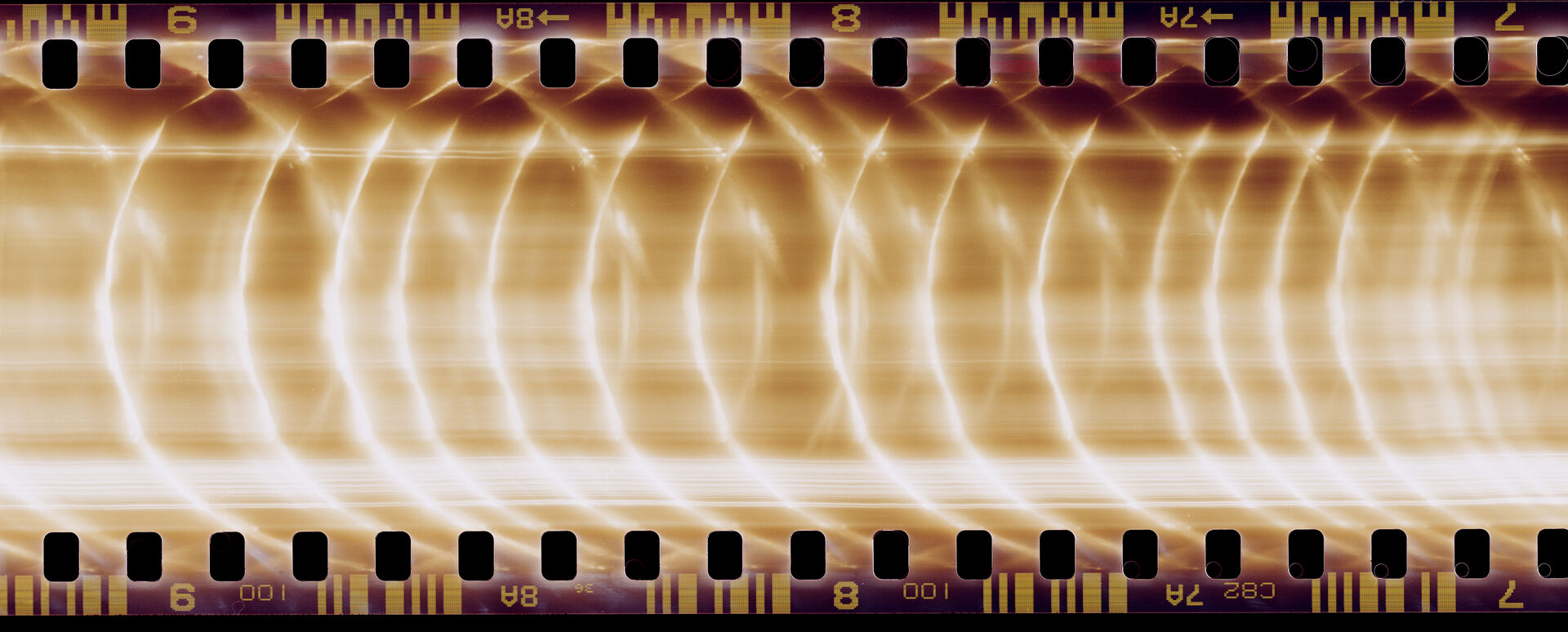
Circle, 2019, Lambda C-print (detail)

Line, 2019, Lambda C-print (detail)
For Flusser, nothing less than human freedom is at stake in a world ruled by automation that goes unnoticed, and he envisioned an important role for the self-aware photographer. With some interpretive liberty, Seger could fit Flusser’s description of the experimental photographer who can ‘outwit the camera’s rigidity’ and ‘smuggle human intentions into its program’ to ‘create unpredictable information’.Flusser, 80–81. This notion of experimental photography offers a productive lens through which to evaluate works like a circle, a line, a cross or Black Body. Moreover, Segers’ materially based ‘collaborative projects’ constantly remind us of the uncontrollability of both the photographic apparatus and the environments in which we move. In works such as FUNGI, Blue Waters, or Responding Rain, elements such as heat, sunlight, and wind plus water, air, and rain are companions in the photographic process.
This ambiguous, alienating quality inherent to photography can be linked to the movement toward ‘de-localisation’ that thinkers such as Latour and Tsing say is characteristic of life in the twenty-first century and has played a role in the development and maintenance of something like technical or instrumental reason.There is much more to be said about the triangular relationship between photography, capitalism, and alienation, which is impossible to summarise in a few paragraphs. What is important here is that photographic media drastically influence our view of the world, contributing to our disconnection from our immediate environment. If we want to reconnect with the world, ‘if we are to believe in the world,’ writes David Levi Strauss, ‘we must have images of it, and we must have something to do with those images.’David Levi Strauss, Photography and Belief (New York: David Zwirner Books, 2020), 67. Segers’ projects are constantly an attempt to materialise multi-voiced encounters in photographic processes. For Segers, they are also a way of ‘localising’ photography itself. This kind of photography is not a nostalgic, tendentious, or retroactive flight to a pre-digital era, but the formulation of a new photographic sensibility that is receptive to the contaminated diversity that has always already surrounded us. Segers’ photographs are quotations with source references. They bear the marks of their genesis, are both the result of an attentiveness and an exhortation to practise it, giving a place to both the invisible world and the viewer, connecting them in meaningful ways.
If we allow ourselves today to believe in the potential of a salutary photographic alienation, the kind of force capable of focusing our attention on the largely invisible or unnoticed collaborations and entangled worlds that are fundamental to the precarious survival of all life, without reproducing the systematic ideologies that seem to lie at the root of a world permeated with alienation, then Segers’ ‘materialism’ is a good place to start.
This article was commissioned by Trigger in the context of its upcoming printed issue Trigger #4: Together – to be published in February 2023. This issue is guest-edited by Susan Meiselas and explores collaborative practices in photography and beyond. Sixteen contributions engage with strategies of co-creation that stretch notions of authorship and ownership, breaking through existing heteronormative, state-owned, or hyper-individual categories.
